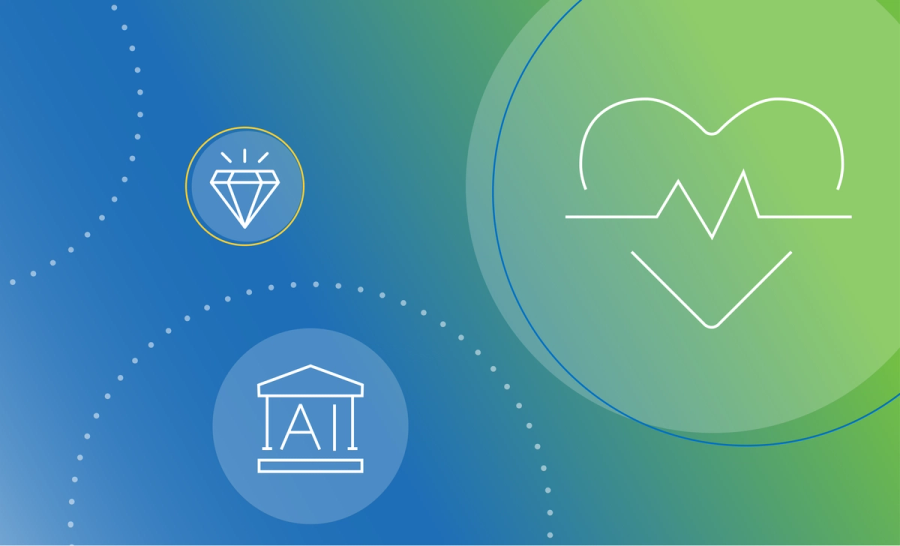Improving government services with Collibra Data Quality & Observability: A closer look at the food stamp program

In our data-driven age, data quality is crucial for any organization — but it’s particularly vital for citizens who rely on government agencies to provide essential services.
Government programs of all kinds can benefit from the use of Collibra Data Quality & Observability. For example, Collibra can help government agencies improve their services to constituents and make more informed decisions about program improvements. Whether it’s a program aimed at providing financial assistance, healthcare coverage, or other services, Collibra can help agencies ensure that they are accurately identifying eligible recipients, delivering benefits in a timely and efficient manner, and providing up-to-date information to program participants.
Let’s dive into a specific example focused on the Supplemental Nutrition Assistance Program (SNAP) — commonly known as the food stamp program. It is an eye-opening demonstration of how Collibra Data Quality & Observability can help government agencies improve services to constituents, especially in our most vulnerable communities.
Navigating a complex data landscape
SNAP is administered by the United States Department of Agriculture (USDA) through its Food and Nutrition Service (FNS) division.
However, the actual implementation and management of SNAP occurs at the state level. Each state has its own agency responsible for SNAP oversight.
The administration of SNAP involves several key components:
- Eligibility determination: Each state sets its own eligibility criteria based on federal guidelines and typically includes factors such as income, household size, and resources. Applicants must provide documentation to verify their eligibility, and state agencies are responsible for evaluating and approving or denying applications.
- Benefit calculation: The amount of SNAP benefits a household receives is determined based on the household’s income, size, and certain expenses. The USDA provides a formula, known as the Thrifty Food Plan, to calculate the maximum monthly benefit amount for each household size. States use this formula, along with information about the household’s income and expenses, to determine the actual benefit amount.
- Electronic Benefit Transfer (EBT): Once approved for SNAP, recipients receive benefits via an Electronic Benefit Transfer (EBT) card, which functions like a debit card. States are responsible for issuing EBT cards and managing the EBT system. Recipients can use their EBT cards at authorized retailers to purchase eligible food items.
- Program integrity and compliance: State agencies must ensure SNAP benefits are issued accurately and that recipients and retailers follow program rules. This includes monitoring for fraud, waste, and abuse, as well as conducting periodic reviews and audits of recipient eligibility and retailer compliance.
Processing SNAP applications requires state agencies to verify applicant information across multiple systems.
However, most agencies face several significant challenges:
- Data silos make it difficult to access and share necessary information
- Verification of data is often a manual and time-consuming process, leading to errors and inaccuracies.
- Inconsistent data formats and standards across different departments and programs can make it difficult to aggregate and analyze data effectively.
- Lack of automated data quality can result in duplicate records, incomplete data, and other data quality issues.
As a result, state agencies often struggle to provide efficient and accurate services. Antiquated systems and a retiring workforce only exacerbate the challenges.
Tackling error rates and funding challenges
Unfortunately, in the case of the SNAP program, states literally lose money because they can’t effectively manage their complex data landscape.
The USDA allocates funding to states based on their error rates, which are assessed by evaluating the accuracy and reliability of the data used to administer programs like SNAP.
Lower error rates indicate state agencies are effectively managing data, resulting in more accurate and efficient services. These states receive more funding. States that demonstrate strong performance and maintain low error rates are rewarded with USDA bonuses, which can be used to further enhance programs and services.
On the other hand, states with high error rates may face penalties, including funding reductions, that can significantly impact a state’s ability to provide essential services to citizens.
To tackle the challenges associated with error rates and funding, state agencies must focus on resolving improper payments, measuring error rates, and setting improvement goals. Here are some strategies for addressing these challenges:
- Implementing robust data quality initiatives: State agencies should prioritize data quality by implementing data management tools, such as Collibra Data Quality & Observability, which can help identify and address bad data. By improving data quality, agencies can reduce their error rates and secure more funding.
- Establishing clear data governance policies: Data governance policies can help ensure that all data collected, stored, and used by state agencies adheres to specific quality standards. These policies should outline roles, responsibilities, and processes for managing data, as well as define performance indicators to measure success.
- Conducting regular audits and reviews: State agencies should periodically audit their data and processes to identify areas of improvement. By conducting regular reviews, agencies can proactively address issues, reducing the likelihood of errors and improving overall data quality.
- Setting improvement goals and tracking progress: State agencies should establish clear goals for reducing error rates and enhancing data quality. These goals should be realistic, measurable, and time-bound. Agencies should also regularly track progress to ensure they are on track to meet objectives.
- Investing in training and workforce development: State agencies should invest in training their staff on data management best practices and the tools necessary to maintain data quality. A well-trained workforce can significantly contribute to reducing error rates and improving the overall efficiency of government services.
By addressing error rates and focusing on improving data quality, state agencies can increase the likelihood of securing more funding and providing better services to citizens.
Implementing robust data quality initiatives, establishing clear data governance policies, conducting regular audits and reviews, setting improvement goals, and investing in workforce development are all crucial steps toward tackling error rates and funding challenges for SNAP as well as many other government services, such as Medicaid, Medicare, and public utilities like the local power agency.
Improving service quality with Collibra Data Quality & Observability
Wondering how you can possibly improve the quality of service at your agency?
Across the United States, Collibra Data Quality & Observability has played a crucial role in helping government agencies streamline processes and improve service quality.
Some of the key benefits of Collibra Data Quality & Observability include:
- ML-generated adaptive rules: Stop coding data quality rules by hand. Instantly connect to any data source and generate thousands of monitoring controls in minutes. Instantly detect breaking trends so you can stop sending bad data downstream.
- Data discovery and enforcement: Access an out-of-the-box repository of industry-specific, auto-validation rules. Automatically discover sensitive data, enforce quality and take action on broken records.
- Custom data quality rules: Write your own custom rules with an intuitive, built-in SQL editor. Avoid proprietary programming language lock-in and rule rewrites as data moves across systems. Stop re-writing the same rules over and over and use our rule templates to build rules that can be re-used and shared across many business units.
- Data pipeline monitoring: Never make a business decision on stale data. See inside data pipelines to reveal blindspots in your data operations. Distinguish one-off incidents from system-wide hiccups. View data health by business unit and data source.
Improved data quality can have a significant impact on the efficiency of government services and the lives of citizens.
In the case of SNAP, Collibra Data Quality & Observability can help government agencies streamline processes and enhance service quality in a number of ways, including:
- Streamlining data access and improving data quality: Collibra helps agencies break down data silos, making it easier for agencies to access and share information. The result: Faster application processing time with trusted data.
- Increasing efficiency in processing applications: With improved data quality and streamlined data access, government agencies can process more applications per week.
- Reducing error rates to maximize funding: By helping agencies identify and address data errors, reducing error rates. Lower error rates enable states to secure more funding.
But SNAP is just one example of how Collibra Data Quality & Observability can improve service quality for government agencies.
By streamlining data access, ensuring data quality, and improving compliance, Collibra Data Quality & Observability can help your government agency provide better services to your citizens.
You can take a significant step towards enhancing the quality of your agency’s services and making a meaningful difference in the lives of those you serve.
Learn more about Collibra Data Quality & Observability.
Related articles

Data QualitySeptember 12, 2024
What is data observability and why is it important?

AIJuly 15, 2024
How to observe data quality for better, more reliable AI

Data QualityNovember 8, 2024
Announcing Data Quality & Observability with Pushdown for SAP HANA, HANA Cloud and Datasphere

Data QualityNovember 16, 2023
The data quality rule of 1%: how to size for success
Keep up with the latest from Collibra
I would like to get updates about the latest Collibra content, events and more.
Thanks for signing up
You'll begin receiving educational materials and invitations to network with our community soon.
